By BRENDA JOSEPHSON
Devil’s club is avoided by hikers due to the sharp spines on its bark and leaves. However, during a brief period in the spring, the tender young shoots can be gathered and eaten raw while on a hike or prepared into a culinary delicacy.
Last February, radio host Bob Bird invited me to discuss food sustainability on the “Talk of Kenai” after I wrote about one of Alaska’s success stories in Delta Junction.
During our conversation, we touched on foraging, and he asked if I had tried devil’s club shoots. While I approach food with a sense of adventure, before Bob’s question, I had only considered devil’s club for its healing properties.
This spring, tasting devil’s club was on my culinary to-do list.
Devil’s club (Oplopanax horridus or Oplopanax horridum), also known as Alaskan ginseng, is native to Alaska, ranging from Southeast Alaska to Southcentral, encompassing the Alaska Panhandle and Kodiak Island. It also grows in other regions in the Pacific Northwest.
This plant thrives in moist environments, such as seepages, near streams, within wet forests, at the bases of cliffs, along forest edges, and in subalpine areas. Devil’s club often forms dense thickets and is easily identifiable by its large, spiky leaves and thorny stems, which can grow up to 10 feet tall.
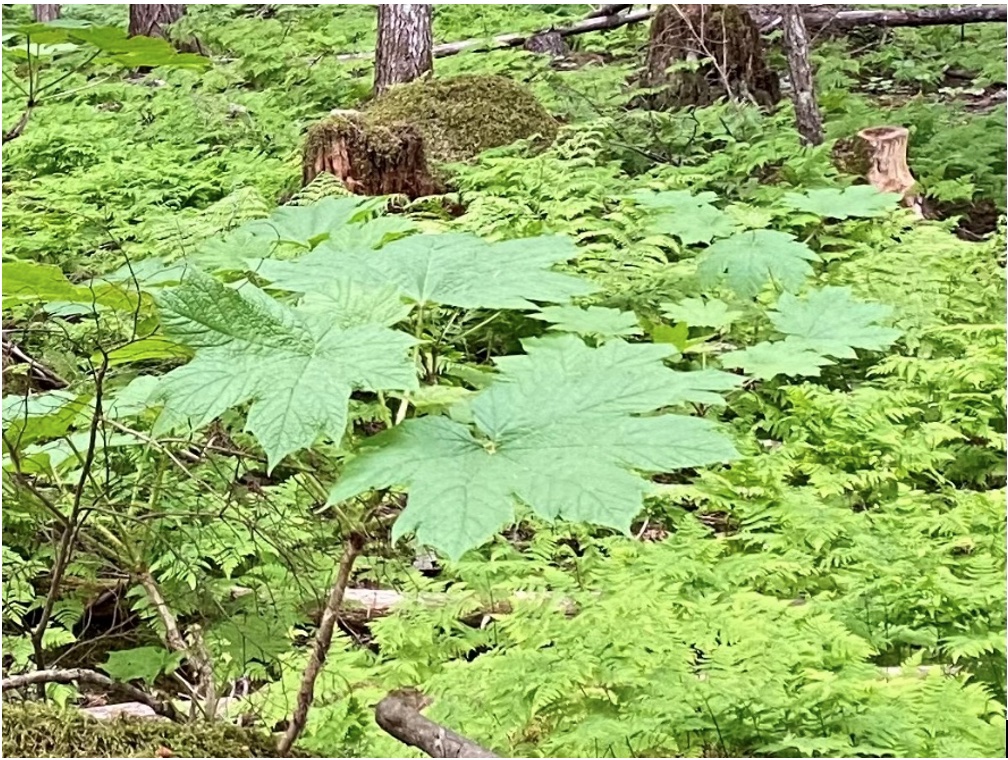
For centuries, devil’s club has been revered and used by Alaska Natives who valued it for its medicinal properties. The Botanical Institute lists the traditional uses for treatment of conditions such as diabetes and cancer, as well as its antibacterial and antifungal properties. Currently, commercially prepared products containing devil’s club are available to use for pain, inflammation, and infections.
Eleanor G. Viereck’s book “Alaska’s Wilderness Medicines” describes some of the many traditional uses and preparations for devil’s club. While the berries of the devil’s club plant are not considered edible, she mentions that the inner bark of the plant’s underground portion was boiled to create a tea believed to help treat tuberculosis, digestive issues, and colds. She goes on to say that people reportedly used the bark to treat boils, sores, and other external infections. Viereck also mentions that the Yakutat Tlingit would scrape the thorns off the stem bark and chew on it “for its emetic and purgative effects as well as for a general cure-all.”
The website Health Benefits Times offers science-backed information on nutritional health and outlines numerous potential benefits of devil’s club. These benefits include the possible reduction of inflammation, slowing the growth of cancer cells, providing pain relief for arthritis, aiding in wound healing, and supporting digestive health and weight loss. However, the website also cautions that individuals with certain medical conditions may be more susceptible to negative reactions when using devil’s club. These conditions include, but are not limited to, diabetes, low sodium levels, heart problems, high or low blood pressure, gallstones, peptic ulcers, and pregnant or breastfeeding women.
Devil’s club has remarkable therapeutic potential. However, what is truly exciting to explore is its culinary potential, particularly the taste and texture of the shoots.
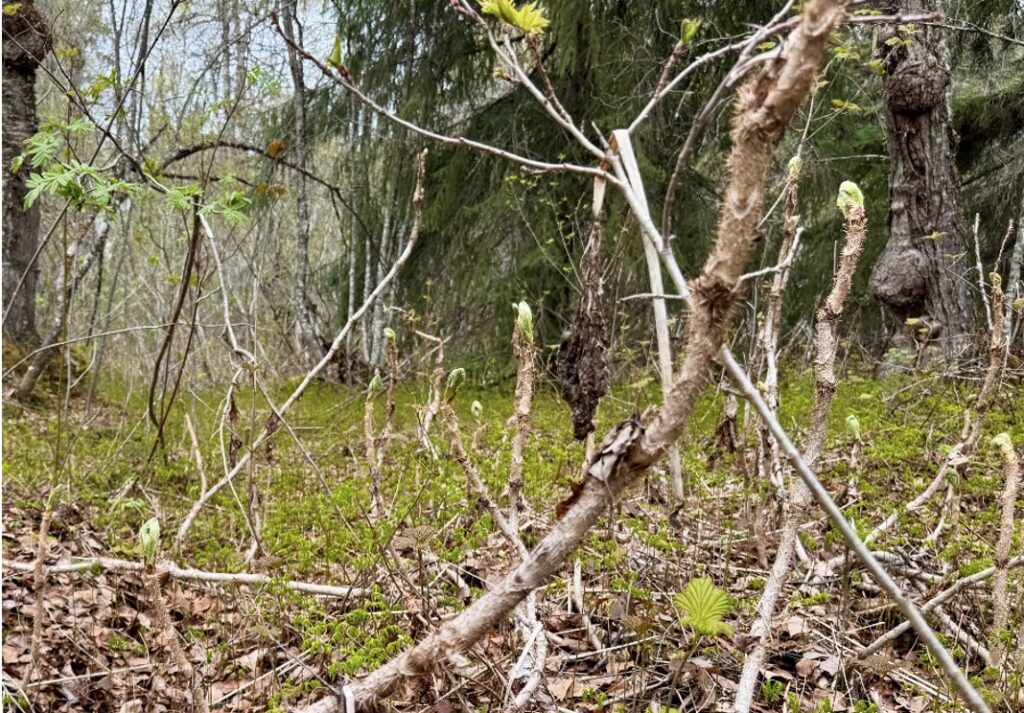
When foraging for devil’s club, it is important to sustainably harvest this slow-growing plant to ensure its continued availability for future generations. Respect the plant and its environment, leaving behind enough to promote healthy regrowth. Additionally, be cautious of the thorny spines on the stems and leaves, as they can easily embed in the skin and result in a painful, festering reaction.
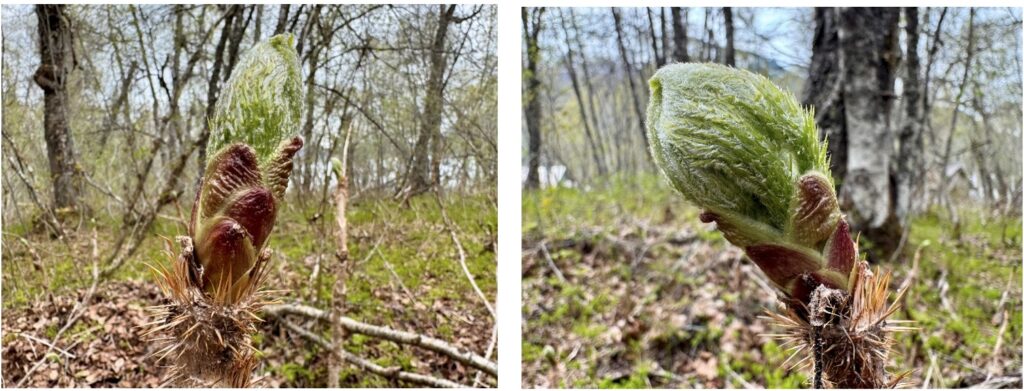
Harvest only the young devil’s club shoots that are just beginning to emerge, measuring approximately 1 to 2 inches in length, while they are still soft and tender. Carefully grasp the shoot between your thumb and forefinger and twist it off, taking care not to touch the spines on the stem. You can enjoy devil’s club shoots raw as a snack while hiking. They have a dense texture and a fresh pine flavor, making them a unique addition to any outdoor adventure.
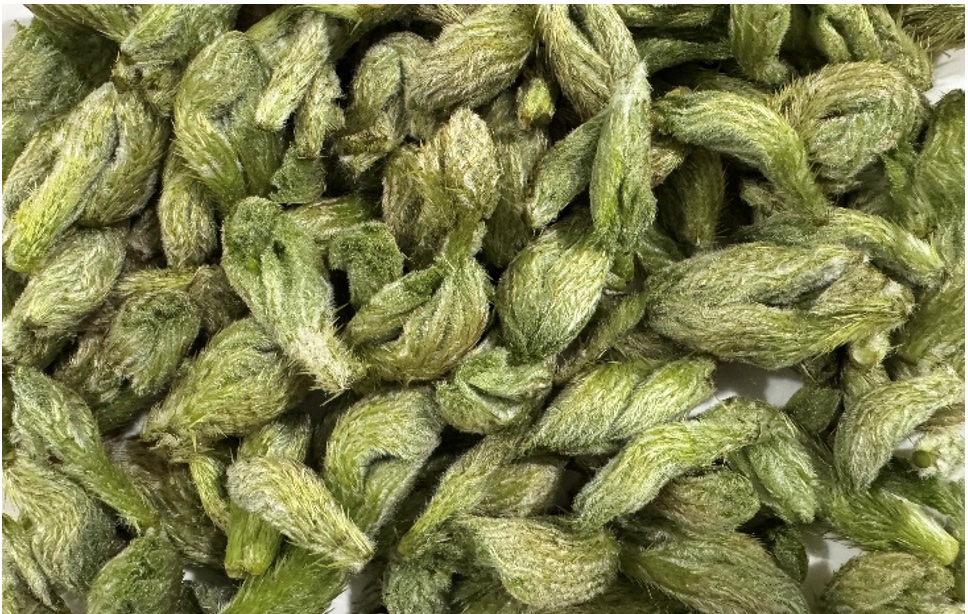
If you are fortunate enough to sustainably harvest enough shoots to take home for a hot dish, there are several enjoyable ways to prepare them. Through my experimentation, I discovered that they are most enjoyable when simply cooked with butter, garlic, lemon, and a pinch of salt.
Applying heat to the devil’s club shoots intensified the flavor, bringing out a sweet and intense earthy pine essence, while the texture remained dense and satiating. Exploring this unique delicacy excited the palate bite after bite, evoking a sense of adventure and connection to nature.
The flavor is quite formidable, indicating that it may be best prepared as a complement to milder vegetables or used to enhance dishes with halibut or shrimp, creating a distinctly Alaskan version of surf and turf. Additionally, devil’s club shoots could elevate the flavor profile of soups and stews, imparting a taste of the wilderness to balance common ingredients for those interested in exploring wild cuisine.
Exploring new culinary experiences often leads to delightful surprises, particularly when incorporating unique ingredients like devil’s club shoots. This earthy taste sensation connects us to the forest and inspires us to elevate our favorite recipes with natural foods that celebrate the distinct and untamed flavors of Alaska.
Sautéed Devil’s Club Shoots
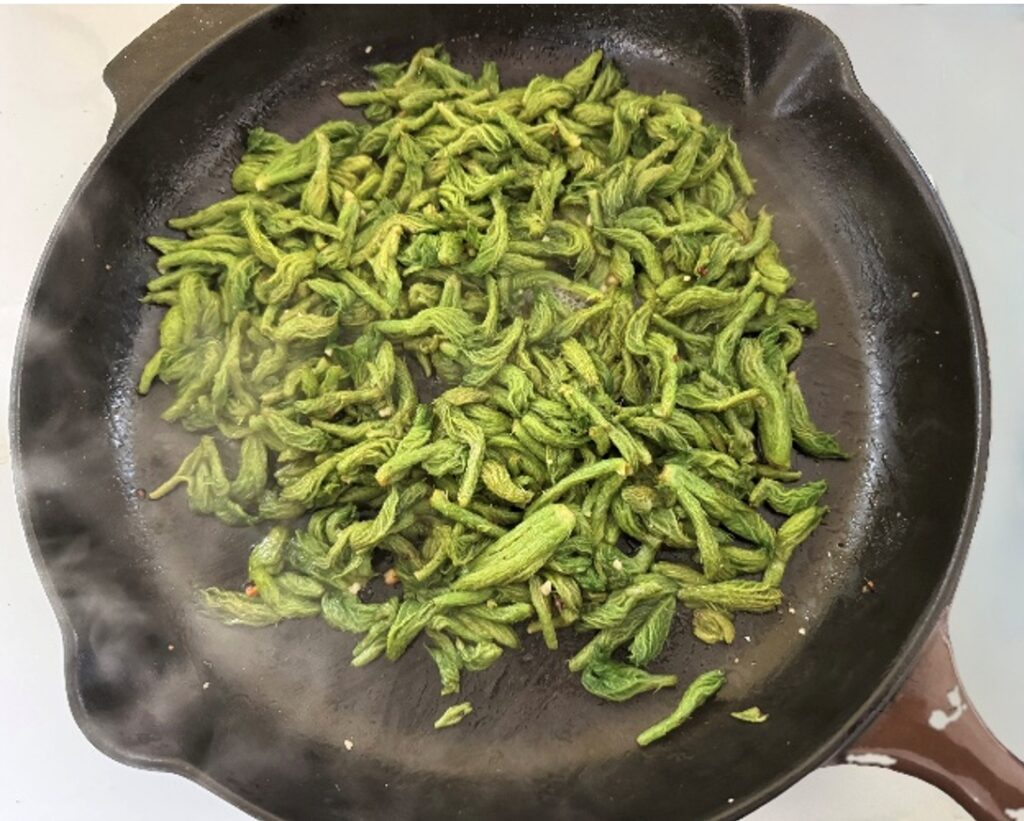
Ingredients:
1 small foraging bag full of freshly picked devil’s club shoots (approximately 2 to 3 cups)
2 to 3 tablespoons of butter (or substitute olive oil)
½ lemon, freshly squeezed (approximately 1 tablespoon of lemon juice)
1 to 2 cloves of garlic, minced
Sea salt and freshly ground pepper, to taste
Makes approximately 4 to 6 servings depending on serving size.
Preparation:
Start by preparing to blanch the devil’s club shoots. Place a large pot over high heat and bring the water to a boil. While waiting for the water to boil, wash the shoots thoroughly by submerging them in a bowl of cool water, then rinse them again. Drain the shoots.
Once the water is boiling, add the shoots and blanch them for 1 to 2 minutes. As soon as the shoots are blanched, remove them from the boiling water and place them in a bowl of ice water for a few minutes. Then, drain the shoots in a colander or strainer.
The shoots will retain excess water, remove as much of the moisture as possible before cooking. To achieve this, press the shoots while they are in a colander, or place them on a clean paper towel and press until most of the water is absorbed.
Heat a sauté pan over medium-high heat and add the devil’s club shoots. The heat will help draw out the excess water, causing it to evaporate. Stir or shake the pan occasionally until the water begins to evaporate. Once most of the water has evaporated, add the butter. Continue stirring or tossing the pan until the butter is melted and the shoots are coated evenly.
Then, add the minced garlic and mix it into the shoots. Let the mixture cook undisturbed for one to two minutes until the garlic becomes aromatic. Next, toss the pan or stir occasionally for a few minutes to ensure even cooking, taking care not to overcook or scorch the garlic.
Finally, add lemon juice, sea salt, and freshly ground black pepper to taste. Remove the pan from the heat and serve immediately to enjoy while it’s still hot.
Brenda Josephson is a Haines resident. She holds degrees in Culinary Arts and Food Business Leadership from the Culinary Institute of America, Hyde Park, New York. She enjoys spending time fishing, foraging, and savoring Alaska’s abundance of natural and wild foods with her family.
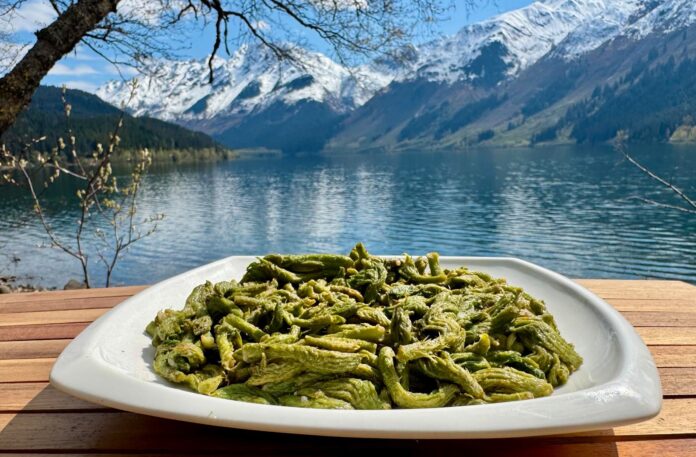
I haven’t tried Devils Club yet. But last week, we steamed some (almost) ripe fireweed stalks. They weren’t bad, persey, they weren’t good either. Plus, we didn’t go blind or die.
“……during a brief period in the spring, the tender young shoots can be gathered and eaten raw while on a hike or prepared into a culinary delicacy………”
Good to know for survival situations, but I’d file this with the porcupine cuisine data. It might be true, but the hazards of prep might outweigh the culinary delights reaped.
Very interesting. I had always looked at devil’s club as a somewhat dangerous, and annoying, weed.
Thank you for another interesting article!
Growing up in Southeast I learned to make a friend of the Devils Club. I learned early on that wearing a Hickory shirt (the heavy knit cotton shirts favored by loggers) enabled one to use one’s forearm and brush the prickly stalks out of the way as you climbed up the hill. After a good Hooter hunt I learned to enjoy removing the many spines from my arms and fingers, there was a therapeutic sense of relief from squeezing out those little buggers!
On a related note, can you please do a story about Goose Tongue? I used to enjoy picking and eating that succulent grass, tasted much like green beans.
Thanks Again!
Thank you for suggesting goose tongue. Currently, our gardens have not begun producing greens, but it is prime harvesting time for a wide variety of wild greens and seaweeds, including goose tongue, which is a tasty treat. I will add it to my gathering list for the weekend.
Thanks for the credit in this article.
But I am not EVER going to worry about preserving devils club for future generations, because despite this wonderful article, most people won’t ever be inclined to harvest it. It is all over the place and makes an off-trail green-forest hike almost impossible. When hunting, I often ask myself: “Go through, or go around?”
GO AROUND!
Plus, its incredibly over-the-top defense mechanism makes certain that whomever wants to twist off the buds, they WILL respect it! Last week I mixed it in with a mélange of veggies in our stir-fry, to hide it from my wife. It did the trick! But I still have some micro-thorns imbedded in my hand from the twist-off.
Butter and lemon-pepper them for a fine hot vegetable as a substitute for brussel sprouts or asparagus.
Devil’s club is all over our backwoods, and your suggestion to include it in our meals made me appreciate seeing the shoots this spring. After spending countless hours removing the thorns from festering wounds, it is wonderful to have a reason to appreciate its culinary potential. We plan to gather more to blanch and store in the freezer for future meals. The shoots will make a flavorful addition to quiches, frittatas, and other egg dishes.
I’m a Juneauite. It’s a regular part of our lives in SE.